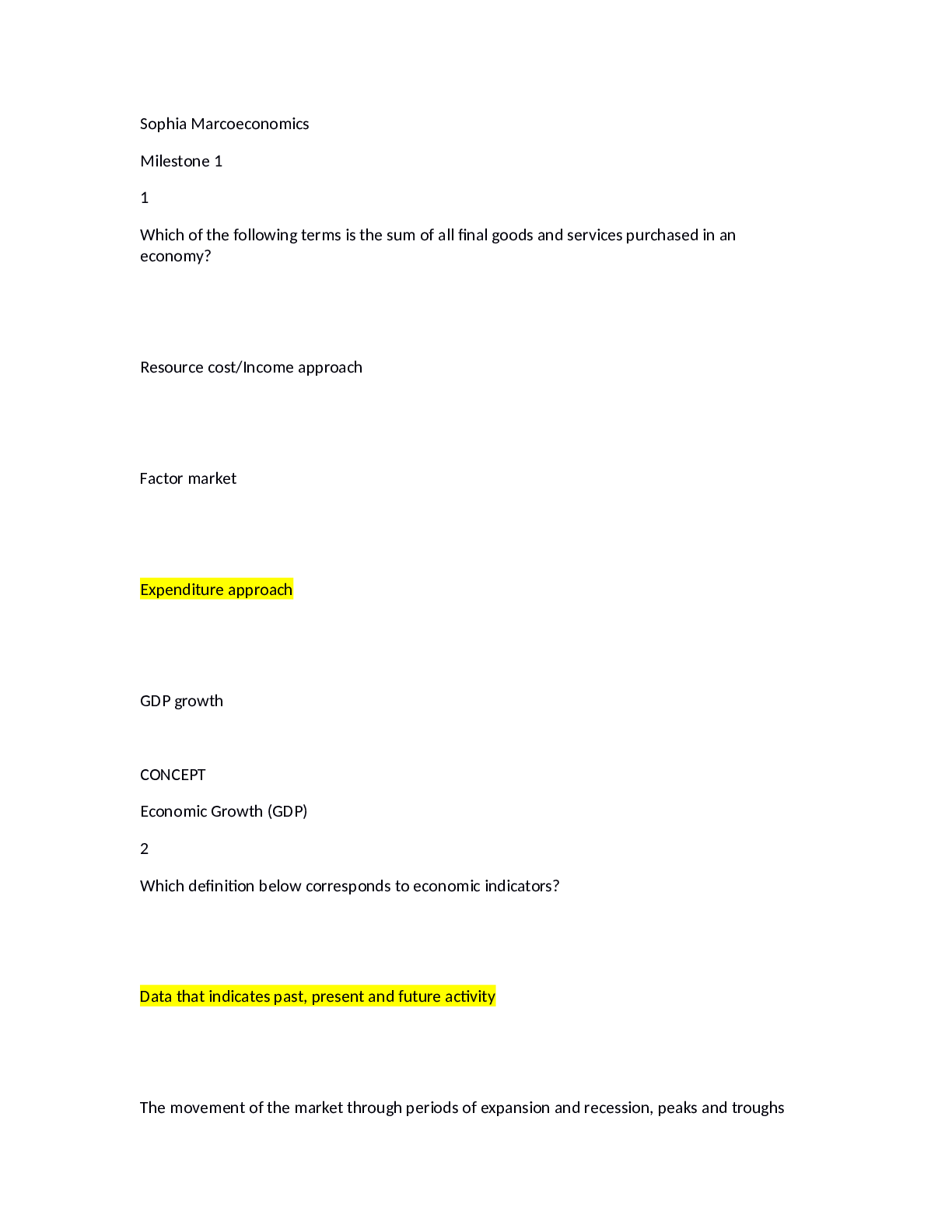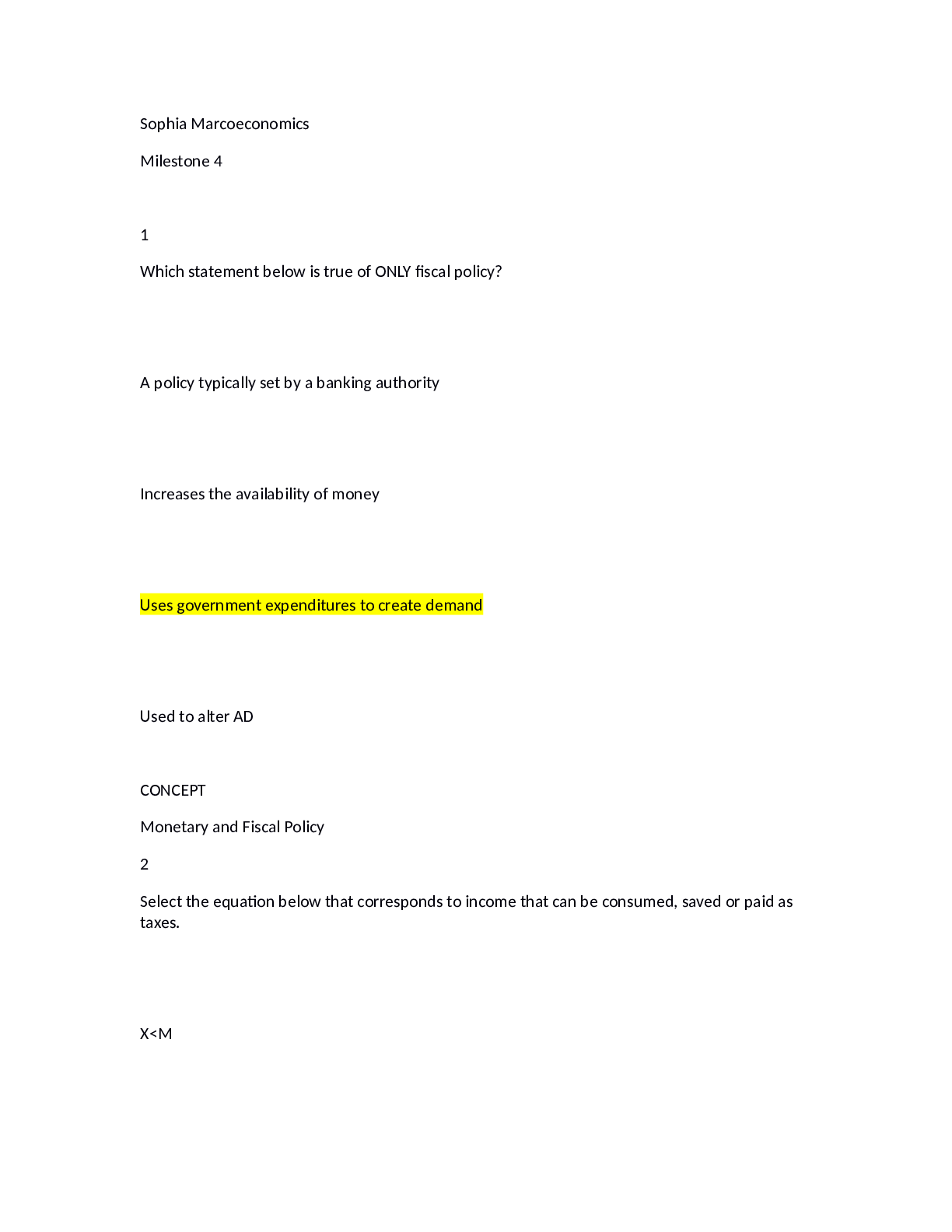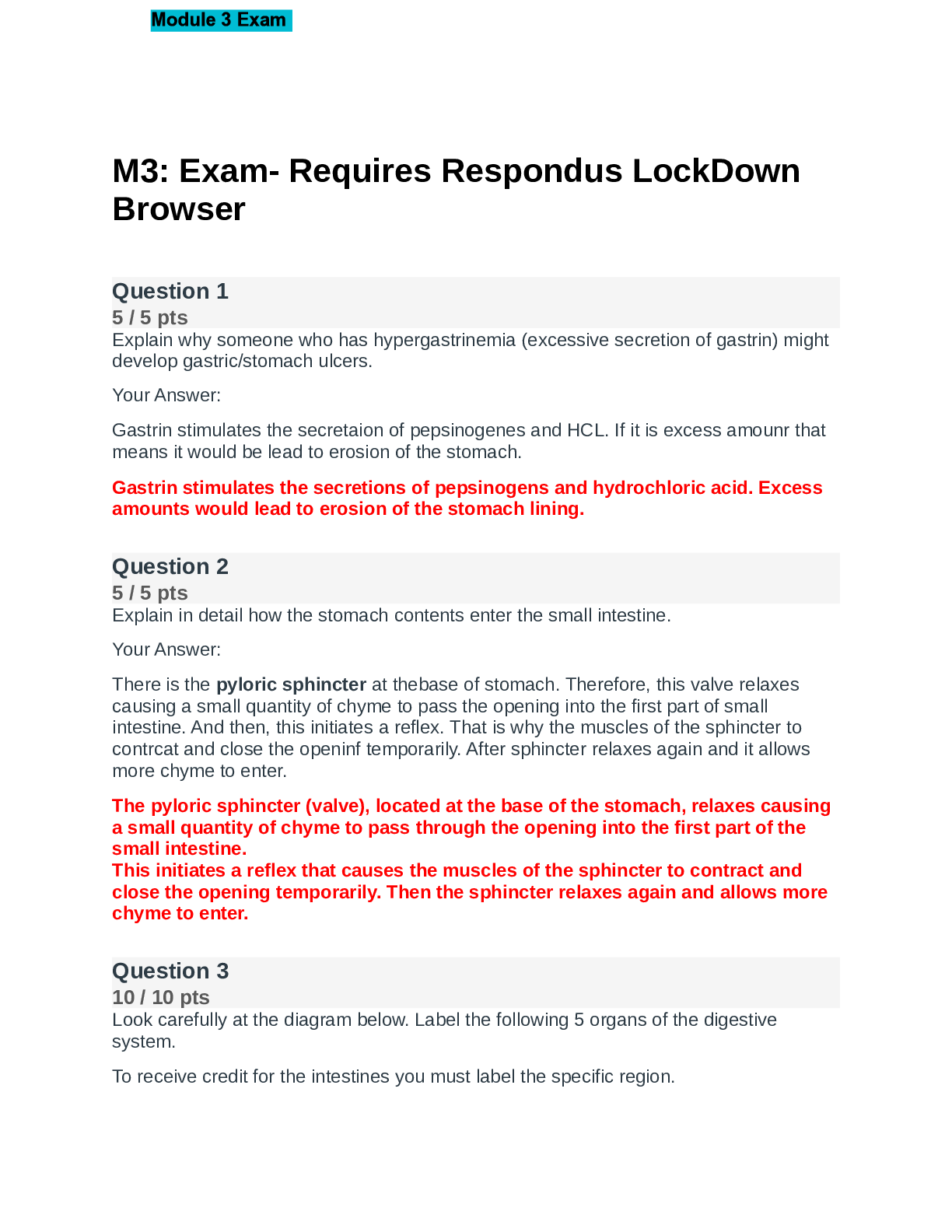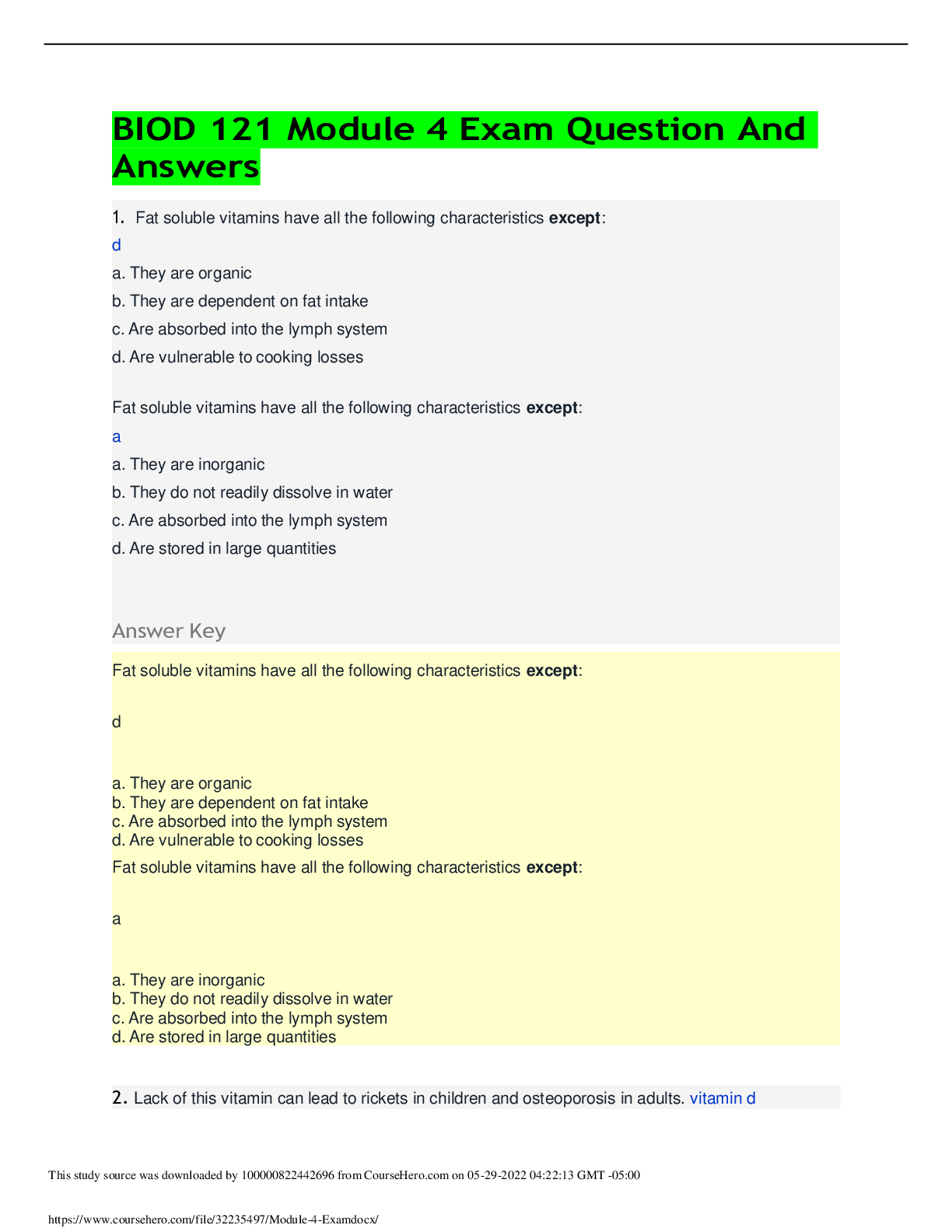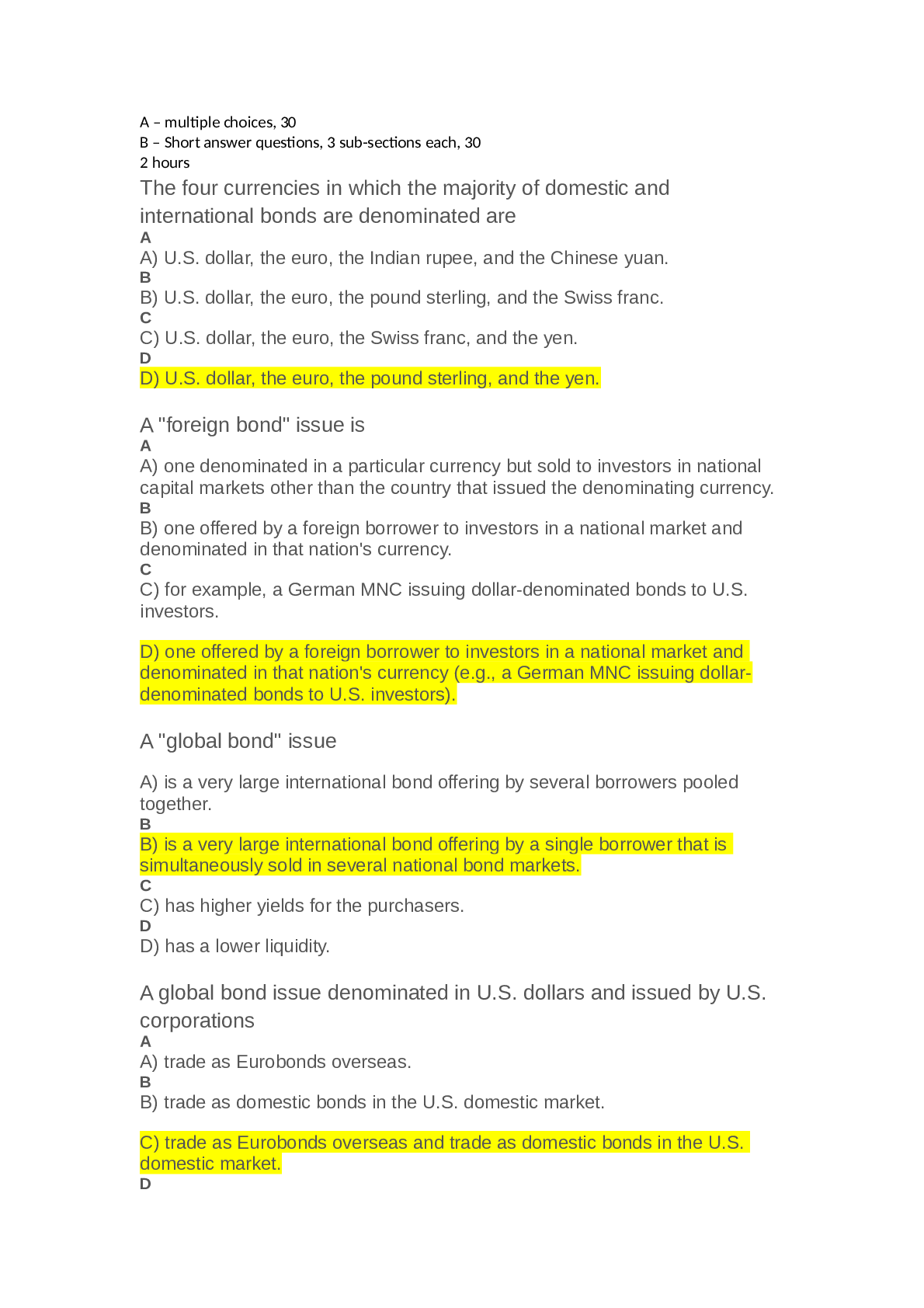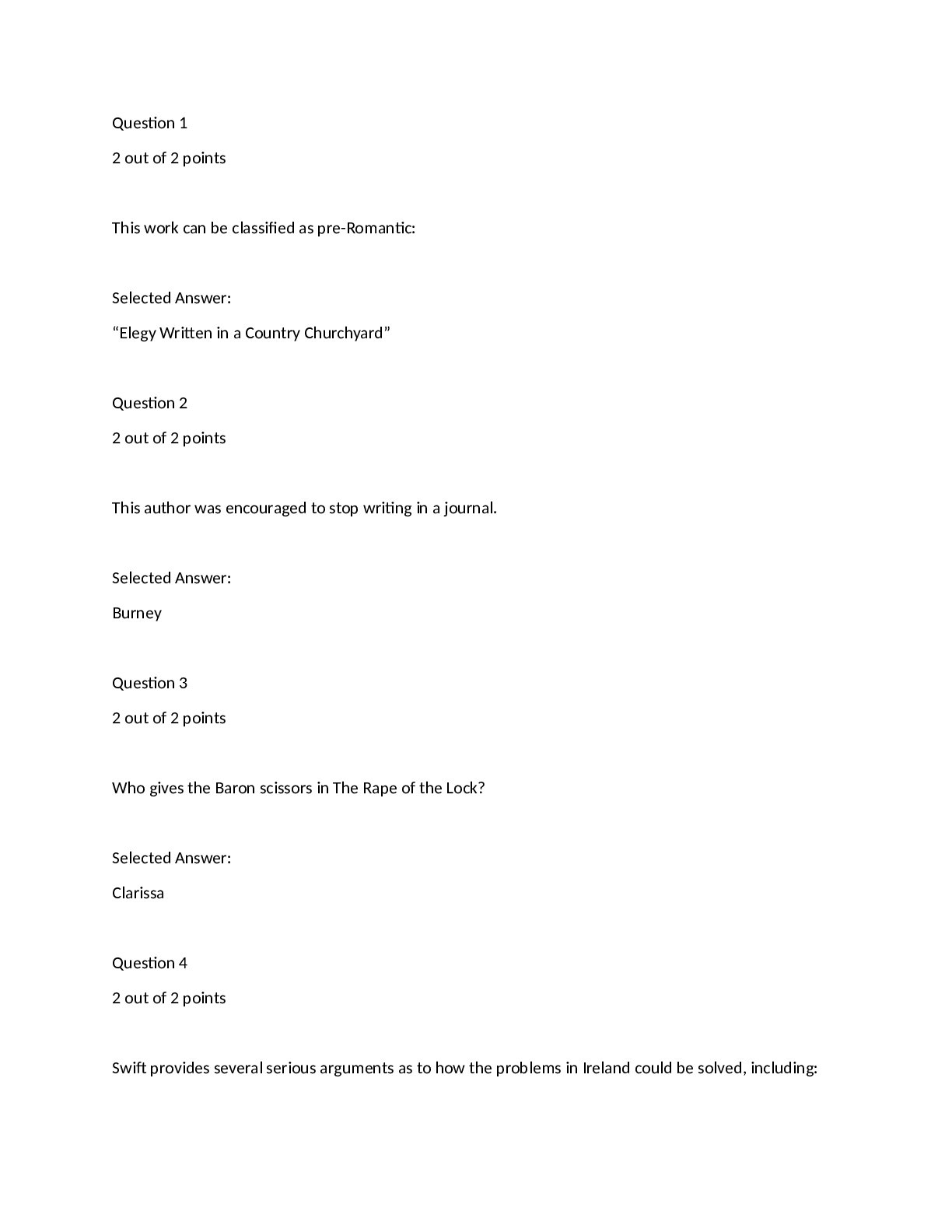CHEM 2202 EXAM ANSWER KEY - Temple University (ALL ANSWERS ARE CORRECT)
Document Content and Description Below
EXAM #2 – ANSWER KEY NAME (please print):_____________________________ TEMPLE ID #:_________________ TEST CODE:__02__ Read each question very carefully before writing and/or choosing your answer.... This examination contains two parts (PART I and PART II) worth a total of 200 pts. Part I consist of 20 questions (50 %), which include multiple choices and fill-in type questions. Enough space has been provided for you to answer the seven questions in Part II (50 %). Your answers in Part II must be legible and all work must be shown to receive full or partial credit. PLEASE DO NOT WRITE YOUR NAME OR INITIALS BEYOND THIS PAGE. PART I SCORE:_____________ PART II SCORE: _____________ TOTAL SCORE: _____________ PART I (100 pts) 1. Which of the following conditions will drive the equilibrium (an example of Le Chatelier’s principle) of the Fischer esterification towards ester formation? (a) addition of alcohol (b) addition of water (c) both (a) and (d) (d) removal of water as it is formed (e) addition of an inorganic acid as a catalyst 2. Which of the following structures are carboxylic acid derivatives? (a) 3 (b) 1, 2, & 3 (c) 4 (d) 1 & 3 (e) All are carboxylic acid derivatives 3. Why are the OH groups of carboxylic acids more acidic than alcohols? (a) because they have higher pKa values (b) resonance stabilization of the carboxylate ion (c) inductive electron donating by the carboxyl oxygen (d) None of the above – carboxylic acids are not more acidic than alcohols. 4. Which of the following compounds is(are) hydrolyzed to butanoic acid upon heating in H2O, H2SO4? (a) Ethyl butanoate (b) Butyl acetate (c) N-methylbutanamide (d) Both (a) and (c) (e) Both (a) and (b) 5. An ylide is a molecule that can be described as a: (a) carbanion bound to a positively charged phosphorous atom. (b) carbanion bound to a negatively charged phosphorous atom. (c) carbocation bound to a positively charged phosphorous atom. (d) carbocation bound to a carbon radical. (e) carbocation bound to a diazonium ion. 6. Carboxylic acids boil at considerably higher temperatures than do alcohols, ketones, or aldehydes of similar molecular weights. This is because they: (a) have a greater oxygen content. (b) form stable hydrogen-bonded dimers. (c) are more acidic (d) are hydrophobic. (e) None of the abov [Show More]
Last updated: 2 years ago
Preview 1 out of 11 pages
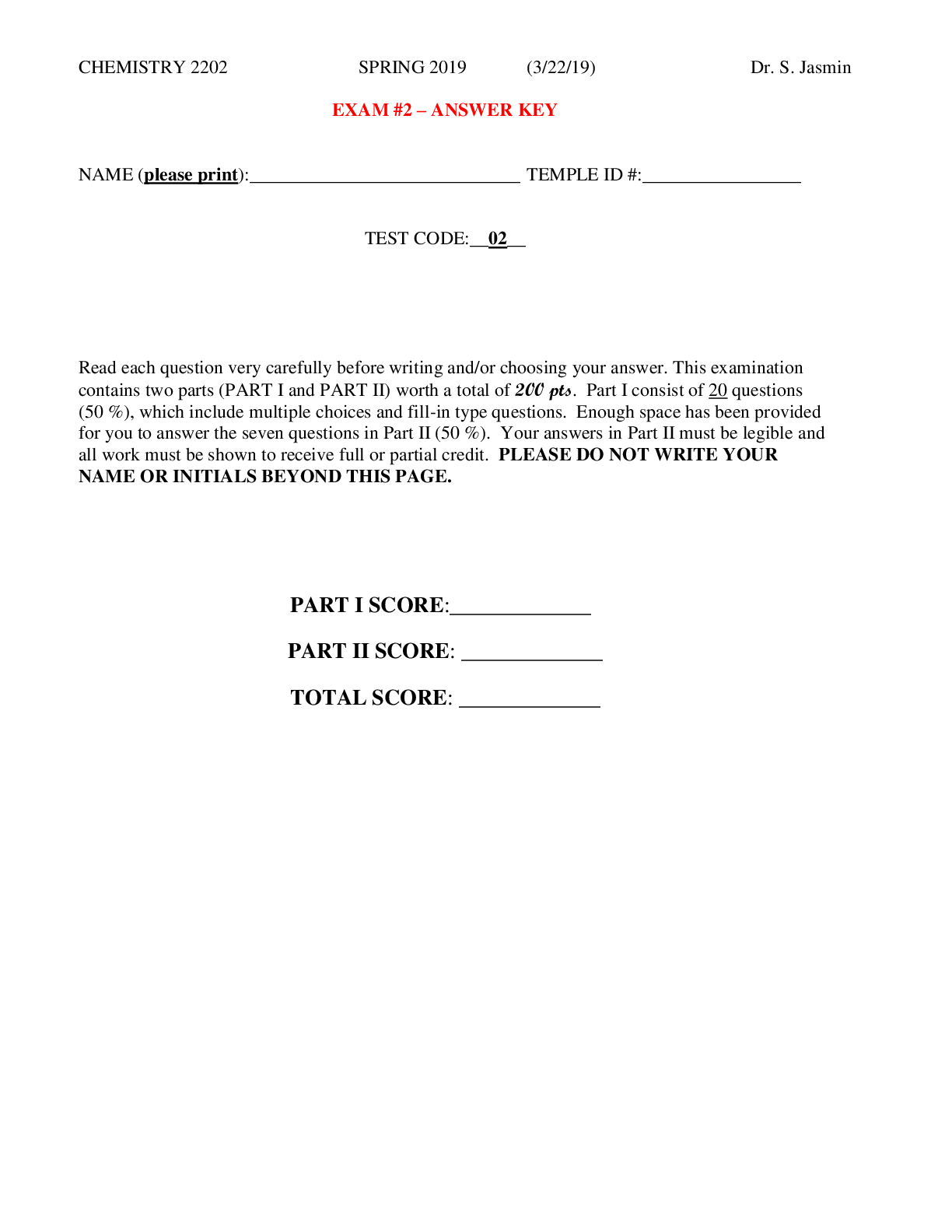
Buy this document to get the full access instantly
Instant Download Access after purchase
Buy NowInstant download
We Accept:

Reviews( 0 )
$7.00
Can't find what you want? Try our AI powered Search
Document information
Connected school, study & course
About the document
Uploaded On
Nov 11, 2022
Number of pages
11
Written in
Additional information
This document has been written for:
Uploaded
Nov 11, 2022
Downloads
0
Views
52



